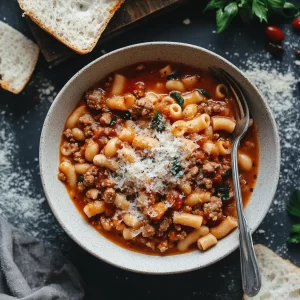One of our missions here at The Spice Girl Kitchen is to increase your confidence in the kitchen, help you level up your cooking, and master the fundamentals. That’s why we include these “Kitchen Tips” blogs. We aim to teach you how to cook intuitively, without relying solely on recipes.
Don’t get me wrong, I LOVE handing out recipes—but if you really want to become a confident cook who understands the “why” behind the “how,” you’ve come to the right place.
Today, we’re diving into the four building blocks of flavor that every great dish relies on: salt, fat, acid, and heat.
Why Salt, Fat, Acid, and Heat Matter
If you’ve ever wondered why certain meals taste balanced and crave-worthy, while others fall flat, the answer often lies in the perfect harmony of salt, fat, acid, and heat. These four elements are the secret behind bringing out the best in any dish.
Samin Nosrat, chef and author of Salt, Fat, Acid, Heat, explains it best:
“Salt enhances flavor, fat carries it, acid balances it, and heat amplifies it.”
Let’s break it down.
1. Salt – The Flavor Enhancer
Salt is the backbone of any dish. It’s not just about making food salty, but about bringing out the inherent flavors of the ingredients you’re using. Proper salting can make the difference between a bland dish and one that makes your taste buds dance.
What Salt Does
Salt brings out sweetness, balances bitterness, and amplifies the overall flavor of a dish. Scientifically, salt affects how we perceive taste by suppressing bitter flavors and enhancing the good ones.
Types of Salt
There are many different sizes and shapes, but here are the 3 most common types of salt used in cooking:
- Kosher Salt: Great for general cooking due to its texture and ability to distribute evenly.
- Sea Salt: Offers a more nuanced flavor and texture.
- Table Salt: The smallest granules, often used in baking but less preferred for cooking due to the iodine content.
Of course, we are biased toward our tri-salt blend as our salt of choice most of the time!
When and How to Use Salt
Salting your food at the right time is key. For instance, salting pasta water ensures that the noodles absorb flavor during cooking, and salting meat before cooking helps break down proteins, making it more tender and flavorful.
One of the most important tips is to season in layers. Add salt at different stages of cooking to build depth of flavor.
“Salt is the single most important ingredient in cooking.” – Thomas Keller.
[the_ad id=”3378″]
2. Fat – The Flavor Carrier
Fat is the luxurious, rich layer that makes food feel satisfying. Whether it’s the creamy texture of butter or the richness of olive oil, fat plays multiple roles in the kitchen.
What Fat Does
Fat adds richness and carries flavors throughout a dish. It also plays a crucial role in browning foods, helping create that mouthwatering crust or sear. Fat emulsifies sauces, giving them body and texture. It coats the tongue, allowing the flavors to linger longer.
Types of Fat
- Butter: Ideal for sautéing and baking, lending a creamy flavor.
- Olive Oil: A versatile fat with a fruity flavor, perfect for both cooking and drizzling.
- Animal Fats: Think bacon fat or lard—great for high-heat cooking and adding deep flavors.
- Specialty Oils: Avocado oil for its high smoke point, or walnut oil for its nutty flavor.
For a deeper breakdown of oil and when to use which type, check out my blog on Understanding and Using Different Cooking Oils!
When and How to Use Fat
Use fat to sauté or sear proteins, roast vegetables, or as the base of a salad dressing. A pro tip: add a drizzle of good olive oil over finished dishes like pasta or soup for a luxurious mouthfeel.
“Fat gives things flavor.” – Julia Child.
[the_ad id=”3378″]
3. Acid – The Balancer
Acid is the secret weapon in the kitchen that adds brightness and balance to a dish. When a dish feels too heavy or flat, acid is the answer to waking up the flavors.
What Acid Does
Acid cuts through richness and balances sweetness and saltiness, creating a more complex and layered flavor profile. It helps cleanse your palate, making each bite feel fresh.
Types of Acid
- Citrus (Lemon, Lime): Bright, fresh, and sharp. Ideal for salads, fish, and dressings.
- Vinegars (Balsamic, White Wine): Adds tang and depth. Perfect for pickling, dressings, and finishing sauces.
- Fermented Foods (Yogurt, Kimchi): Adds acidity and complexity.
- Wine: Adds acidity while deepening the flavor in braises and sauces.
When and How to Use Acid
Acid should often be added at the end of cooking to brighten the dish. Think of a squeeze of lemon on grilled vegetables or a splash of vinegar in a slow-cooked stew.
“Acid makes the flavors of food come alive.” – Alice Waters.
[the_ad id=”3378″]
4. Heat – The Amplifier
Heat transforms ingredients. It’s the difference between raw and caramelized, crispy and tender. Understanding how to control heat is essential for mastering texture and flavor.
What Heat Does
Heat cooks food, yes, but it also intensifies flavors. It causes the Maillard reaction—the browning process that creates complexity and depth in seared meats, roasted vegetables, and baked goods.
For a deep dive into the Maillard reaction, check out my blog on Understanding the Maillard Reaction in Cooking!
Types of Heat
- High Heat: Great for searing and browning (think stir-frying, grilling).
- Low Heat: Perfect for slow-cooking and braising.
- Dry Heat (Roasting, Grilling): Ideal for achieving crispy textures.
- Moist Heat (Boiling, Steaming): Best for gentle cooking methods, especially with delicate ingredients.
When and How to Use Heat
Control is key! Use high heat to quickly sear meat or roast veggies, but lower the heat for slow-cooking to tenderize tough cuts of meat. Also, resting meats after cooking allows residual heat to finish the cooking process and redistribute juices.
“Master heat, and you’ll have mastered flavor.” – Samin Nosrat.
[the_ad id=”3378″]
Food Science Spotlight: How These Elements Work Together
The magic happens when salt, fat, acid, and heat come together in harmony.
- Salt enhances the natural flavors.
- Fat carries those flavors and provides richness.
- Acid balances and brightens, cutting through the richness.
- Heat transforms and amplifies the ingredients.
Think of a classic dish like roast chicken:
- Salt seasons and tenderizes the meat,
- Fat (butter or olive oil) helps achieve a crispy skin,
- Acid (lemon juice) cuts through the richness of the chicken,
- Heat in the oven roasts everything to perfection, creating a balanced, delicious meal.
[the_ad id=”3378″]
How to Use Salt, Fat, Acid, Heat in Different Cuisines
- Italian: Olive oil, tomatoes, and parmesan cheese bring balance to pastas.
- Mexican: Lime juice and chilis enhance rich meats and beans.
- French: Butter and wine create rich, balanced sauces.
- Thai: Soy sauce (salt), sesame oil (fat), rice vinegar (acid), and wok-fried stir-fries (heat) are perfectly harmonious.
Level Up Your Cooking: Practical Tips
To truly master these elements, practice tasting as you go and adjusting. If something tastes too salty, add more acid or fat. Too rich? A splash of acid will do wonders. Experimenting with these elements will help you develop an intuitive sense for balance in your cooking.
Mastering salt, fat, acid, and heat is the foundation of cooking with confidence. By understanding how these four elements interact, you’ll not only elevate your dishes but also begin to cook intuitively.
Next time you step into the kitchen, think about how you can bring balance to your meals using these essential building blocks. Soon enough, you’ll be creating restaurant-worthy dishes without even needing a recipe!
[the_ad id=”3378″]
This post was all about Salt, Fat, Acid, Heat!
Ready to level up your cooking game? Try out these tips and let us know how it goes! Make sure to tag me @thespicegirlkitchen_ on Instagram or @thespicegirlkitchen on TikTok!







